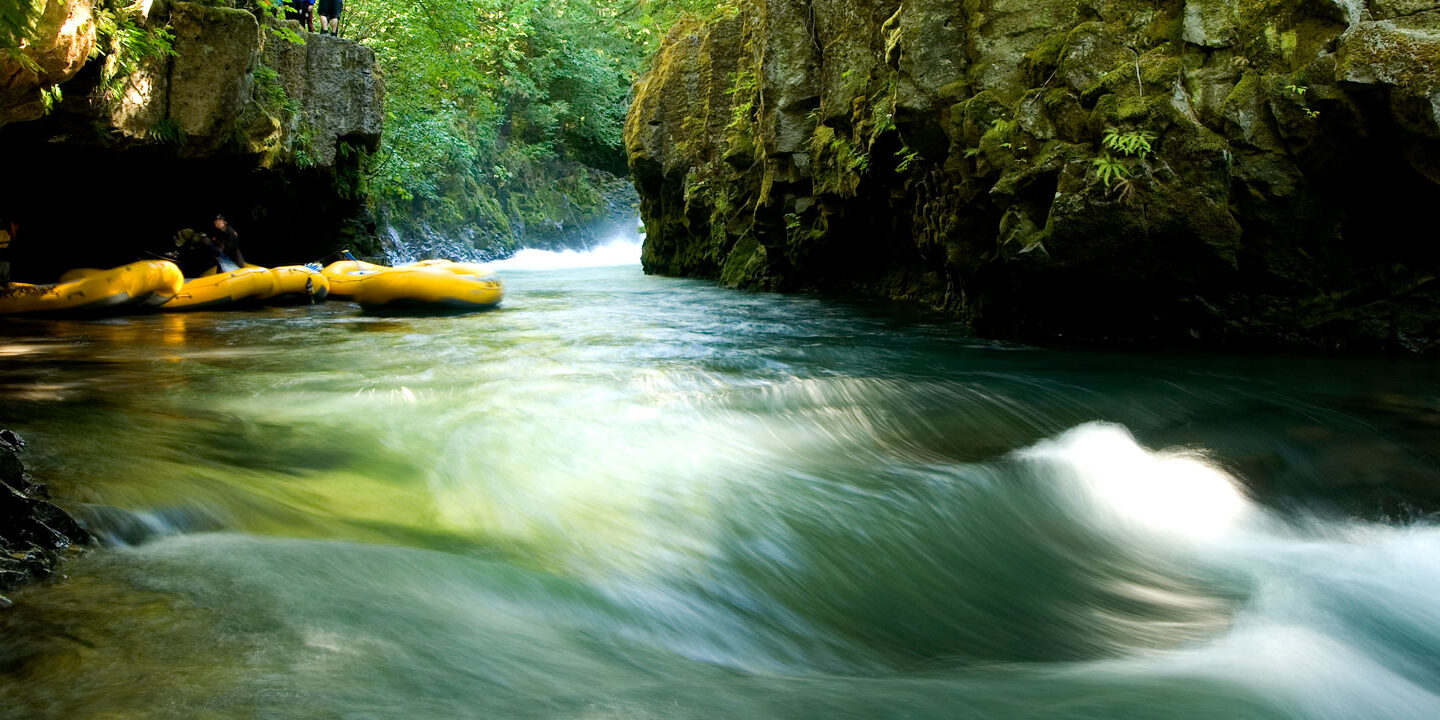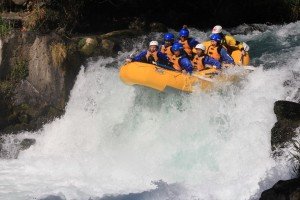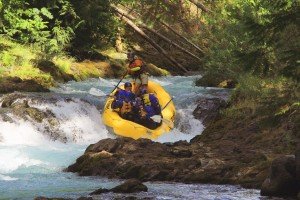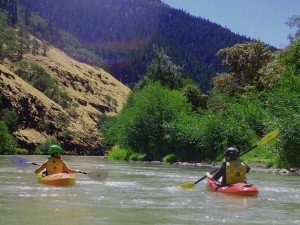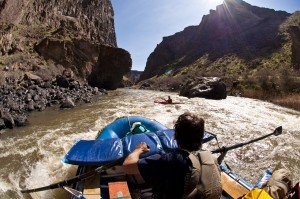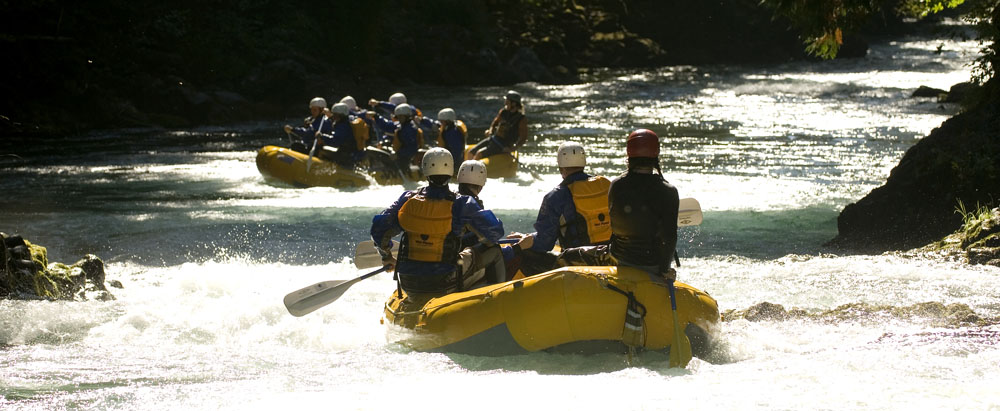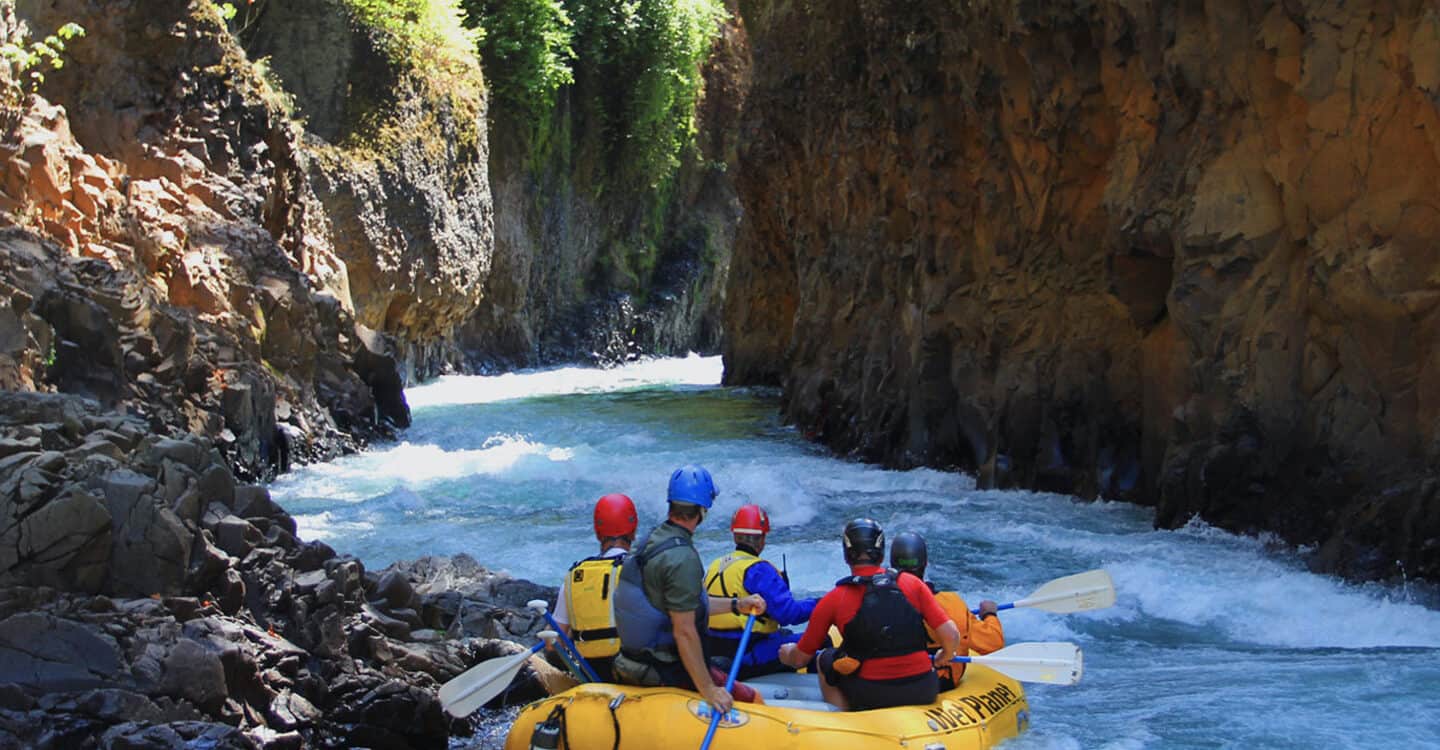Wild & Scenic River Designation
Created by Congress in 1968, the National Wild and Scenic Rivers System was established to “preserve certain rivers with outstanding natural, cultural and recreational values in a free-flowing condition for the enjoyment of present and future generations.”[1] The classifications are broken into 3 categories: Wild, Scenic or Recreational.
Wild Rivers are representation of primitive America and are generally inaccessible except by trail.
Scenic Rivers are still largely primitive and undeveloped, but are accessible in some places by roads.
Recreational Rivers are readily accessible and have undergone some diversion in the past.
The White Salmon River has received designations on two sections of river over the years from the NWSRS for its unique canyon and bedrock geography, hydrology, resident fish, Native American heritage and draw for the whitewater boating.[2] The Klickitat River has received one designation for its outstanding hydrology and geography, the dip-net fishing sites of the Yakima Nation as well as its title of the most significant anadromous fishery on the Washington side of the Columbia – supporting steelhead trout, Chinook salmon and Coho salmon with six distinct runs.[3] The Owyhee River on the Oregon and Idaho border received its designation for its remoteness and unpopulated canyon that has more animal life than human.
Wild & Scenic White Salmon River
With Wet Planet’s base along the banks in Husum, Washington, the White Salmon River is near and dear to our hearts – as well as the paddling community. With it multiple sections offering different levels of difficulty, the White Salmon is well known in the rafting and kayaking circles. The White Salmon River has received Wild and Scenic designations on two different sections of river, making for a total of 27.7 miles.
Middle of the White Salmon River
On November 17, 1986, the Middle of the White Salmon River received the designation of Wild and Scenic. Running from the confluence with Gilmer Creek near the town of BZ Corners to the confluence with Buck Creek at Northwestern Park, this is the most paddled section of the White Salmon River. With nearly continuous Class III-IV rapids with the 10 foot Husum Falls acting as the Grand Finale, this section does not disappoint. Wet Planet is one of 8 commercial outfitters issued special permits on the White Salmon River.
Upper White Salmon River
Topping off at 12,000ft and flowing down to 7,000ft, the Adams glacier combines with seeps and springs to give water and life to the White Salmon River. At its headwaters, the White Salmon River’s glacial waters and remote location earned it a Wild & Scenic designation on August 2, 2005. Starting at its headwaters and flowing to the boundary of Gifford Pinchot National Forest and starting with Cascade Creek and continuing to its confluence of the White Salmon River at Trout Lake, this is the largest stretch of Wild & Scenic on the White Salmon River coming in at 20 miles.
Management Plans and Land Studies
The sections of the White Salmon River are in various stages of Wild & Scenic designations. The Middle has been established as Wild & Scenic for decades – gaining is designation through an amendment of the Wild & Scenic Columbia River Act. Normally, designations follow a much different timeline.
First, the public comes together and a Congressman or State Representative deems the river and surrounding area to be in the public’s best interest to be protected. After this, land and hydrology studies are taken to find the natural patterns of the river. Once these are completed, proposed designation site must go back to Congress for approval. This is the state of limbo that the White Salmon River starting at the end of the Gifford-Pinchot National Forest boundary to BZ Corners is currently in. After a designation is agreed upon and granted, the managing land agency creates an operating and management plan for the river including re-drawing boundaries. This is the current state of the Upper White Salmon Wild & Scenic Designation.
To summarize, it’s a long process.
Klickitat River
Located in south-central Washington and flowing from the Adams Glacier, the Klickitat River is in the high country of the Yakima Nations Reservation. The lower 10.8 miles from its confluence with Wheeler Creek to the confluence with the Columbia River is designated Wild & Scenic. With its mellow class II rapids, this section of the Klickitat River is the perfect location to start whitewater kayaking in the Columbia River Gorge. You might even see Wet Planet’s beginner whitewater kayaker students!
Fishing on the Klickitat
At river mile 2.5, the Klickitat River constricts, dropping into a tight, rock-walled gorge. It is here that the Yakama Nation has set up platforms for dip-net fishing, a tradition of generations, to catch the plentiful salmon and steelhead. This coupled with the Klickitat’s title as the most significant multi-species fishery makes it renowned and earned it the Wild & Scenic designation.
Want to see the Wild & Scenic Klickitat from eye level? Join us for our 2-day Rapid Progression Kayak Course and learn a few strokes as well.
Owyhee River
Located along the Oregon and Idaho border, the Owyhee River is the most remote river that Wet Planet leads whitewater rafting trips on. With a deep basalt canyon that cuts through an arid, unpopulated landscape – you are more likely to see California Bighorn sheep, mule deer, bobcats, mountain lions or raptors than you are people. This remoteness earned the Owyhee designation as a Wild & Scenic River in 1984, protecting 120 miles of river.[4]
Why We Care
For the Wet Planet family, guides and base staff, the river is our life. When we aren’t working on the river, we are playing on the river – and there is nothing better than playing on a river in its carefree, natural state. Would you rather see salmon swimming upstream, green trees bordering the river and the sounds of the forest or would you rather see towering dams made of stone, house fronts and be greeted by the sounds of cars on a highway?
It isn’t just the recreational aspect – many of Pacific Northwest Rivers and rivers everywhere have deep ties and foundations in native tribal religions and cultures. When you witness the majesty of these powerful currents, it’s easy to see why. This coupled with the protection of native fish species including salmon and trout make river stewardship and conservation an important issue that is on the forefront of our minds.
With a combined total of 178.5 miles of Wild & Scenic Rivers in two different states, the next question is when we going on a river adventure to enjoy and appreciate these magical sources of life and excitement in our communities.
Mikayla is full-time marketing and reservations staff as well as the silliest, sassiest office member.
[1] National Wild and Scenic Rivers System, About the WSR Act. Web. https://www.rivers.gov/wsr-act.php
[2] National Wild and Scenic Rivers System. White Salmon River, Washington. Web. https://www.rivers.gov/rivers/white-salmon.php
[3] National Wild and Scenic Rivers System. Klickitat River, Washington. Web. https://www.rivers.gov/rivers/klickitat.php
[4] National Wild and Scenic Rivers System. Owyhee River, Oregon. Web. https://www.rivers.gov/rivers/owyhee-or.php

